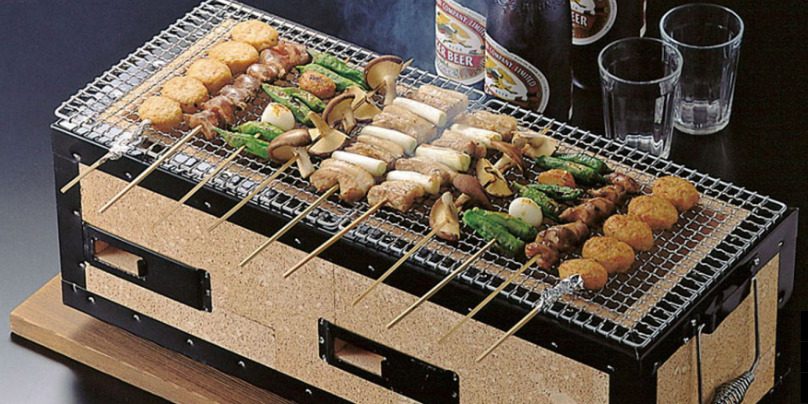When people say “Hibachi”, our minds automatically imagine Japanese cuisine. Delicate foods made on grills to create authentic Japanese dishes. Well, that’s only true if you’ve never been to Japan.
The history of the hibachi grill has a strong North American influence and dates back to World War 2.
The Recent Understanding Of Hibachi Grilling
Hibachi has turned into an umbrella phrase for Japanese grilling. This means that every type of Japanese grilling could be called by its actual name, or generalized as “Hibachi”.
As with many foreign words, the original definition of “Hibachi” has been mistranslated. The term was first used in North America (with success) after World War 2, and since then many people have made it a staple in their diet.
If you went to a Hibachi restaurant or dined in a Japanese steakhouse in North America, you wouldn’t experience real Hibachi grilling. Instead, you would likely be served Teppanyaki.
To help you understand the difference, and explain what a real “Hibachi” grill would look like, we have to dive into the meaning of the word.
The Original Meaning Of “Hibachi” (火鉢 – ひばち)
The word “Hibachi” roughly translates to “fire bowl” in Japanese. In its rawest concept, the bowl consists of an open-topped pot, which has charcoal inside it.
Originally, this pot would be used to heat a room and had no culinary uses. Dating back to the Heian period, these pots were beautifully made and were presented like decorative vases or tables.
In the 1800s (at the latest), historians believe a change was made in the tea brewing culture. It led to teapots being put on top of the “fire bowls”. As the coals turned to dust, they were easy to manipulate. Adding a pot to the hot dust would keep the tea warm, or even cause it to boil.
By the late 1800s, pots of soup were being cooked on Hibachi too, creating a slow cooking experience. These tables or pots would be very large, allowing a whole family to dine or drink during the experience.
Using the original meaning of Hibachi, there is no way it can turn into a grill. When we see North American terms for Hibachi, they are often referring to Shichirin.
How Hibachi Differs From Shichirin (七輪 – しちりん)
Shichirin is another pot that has coal burning underneath, however, the main difference relates to its size and the ability to grill.
Take the coal-filled pot and add a grate or grill on top, and now the Hibachi has turned into a Shichirin. The grill sits like a lid on top of the pot. Of course, you can’t simply add a grill to a Hibachi, but the visual change holds. Shichirins are usually very small, only serving 2 to 3 people at a time.
Because the Shichirin grill is small, it can be easily carried around, which is why many portable grills follow the same construction pattern in the West. Some North American Japanese restaurants will put a Shichirin grill in the middle of a table, to make the cooking experiences feel closer to the plate.
If you are wondering why the term “Shichirin” feels familiar, it might be to do with Ariana Grande’s tattoo mishap. The pop singer tattooed the Japanese characters into her hand, thinking it meant “7 rings” – like her album. The mistranslation is somewhat understandable, as the direct translation is “7 in”, as that was the cost of cooking with charcoal in the Edo period. However, as time and language develops over the decades, Shichirin is only seen as a type of Japanese grill in modern Japanese.
When people think of Hibachi, they either picture Shichirin or Teppan, with Shichirin being the most likely. So why did the North Americans of yesteryear not call it by its true name? The most likely explanation is that they found “Shichirin” too difficult to pronounce, and instead of trying harder, they picked another term to replace it.
How Hibachi Differs From Teppan (鉄板 – てっぱん)
Teppan (which means iron plate), and Teppanyaki (which means iron plate and grill), are the other types of Japanese grilling techniques that are often confused with Hibachi.
With Teppan, the chef often cooks in front of their customers, on a large flat iron plate. The chefs are trained to be amazing cooks, but also create their meals with a dramatic flair. The dining experience becomes a show and a meal.
Summary
If you ask for a Hibachi grill, then we can guess two things about you. One – Japanese isn’t your first language. Two – you’re asking for Shichirin, a pot with coal in, and a grill on top.





























